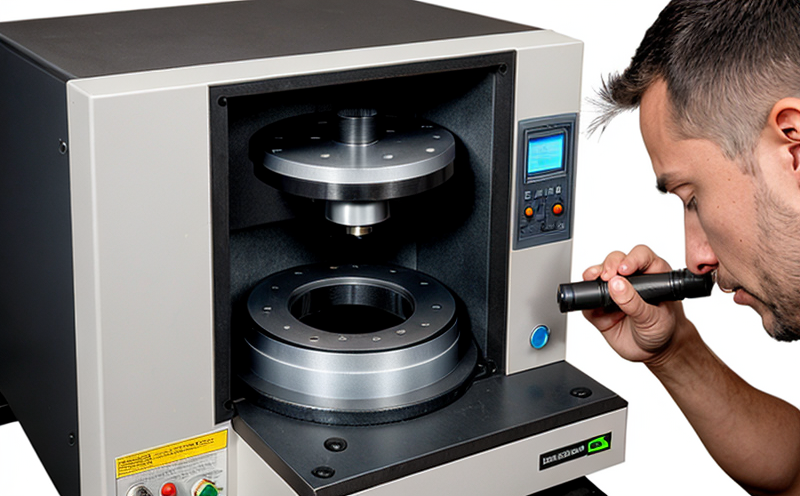ISO 4499 Metallographic Determination of Microstructure in Hardmetals
The ISO 4499 standard provides a comprehensive framework for the metallographic examination and microstructural analysis of hardmetal materials. This service is critical for ensuring that fabricated products meet stringent quality control standards, particularly in sectors such as aerospace, automotive, and tool manufacturing.
Hardmetals are advanced composite materials designed to withstand high wear and heat. They are often used in cutting tools, dies, and other components where durability and resistance to abrasion are paramount. The ISO 4499 standard outlines the procedures for accurately determining microstructure characteristics such as grain size, carbide morphology, and distribution within these complex alloys.
The process begins with the precise preparation of samples using techniques like grinding, polishing, etching, and sometimes even ion beam milling to expose the internal structure. Once prepared, the sample is examined under a high-resolution optical microscope or scanning electron microscope (SEM), depending on the scale of observation required.
A detailed examination involves identifying and classifying various phases present in the microstructure, including carbides, nitrides, and other reinforcements. This analysis can reveal critical information about the manufacturing process, heat treatment conditions, and potential areas for improvement. For instance, irregular or uneven distribution of carbide particles might indicate issues with powder mixing during synthesis.
The results from these analyses are then used to fine-tune production processes, ensuring consistent quality across batches. Compliance with ISO 4499 not only enhances product reliability but also supports ongoing research and development efforts aimed at creating more efficient and robust materials.
Let’s delve deeper into the specifics of this standard:
- Sample Preparation: Proper sample preparation is crucial for accurate interpretation. This includes careful grinding to remove surface imperfections, followed by progressive polishing steps using finer grits until a mirror finish is achieved.
- Etching Process: An appropriate etchant solution is applied to selectively attack certain phases in the microstructure, enhancing contrast and aiding visualization of different components.
- Microscopy Analysis: Using advanced optical or SEM equipment allows for detailed examination at resolutions down to nanometers. This helps in identifying subtle differences in phase composition and distribution patterns.
The insights gained from such thorough examinations can significantly contribute to advancements in material science, leading to innovations that push the boundaries of what is possible with hardmetal technologies.
| Step | Action | Description |
|---|---|---|
| 1 | Sample Collection | Select representative samples from production batches for testing. |
| 2 | Grinding & Polishing | Use progressively finer abrasives to achieve a smooth surface. |
| 3 | Ethylene Dichloride Etching | Analyze the sample using an etchant solution for better visualization. |
| 4 | Microscopy Examination | Utilize optical or SEM microscopy to observe and document microstructure. |
The application of this standard extends beyond quality assurance into the realm of research where new compositions are being explored. Understanding how varying conditions during synthesis affect final product characteristics is essential for developing next-generation hardmetals tailored specifically for demanding applications.
International Acceptance and Recognition
- The ISO 4499 standard has gained widespread acceptance across industries worldwide due to its rigorous approach to microstructural analysis.
- This international recognition ensures that results obtained from this service are universally accepted, facilitating seamless global trade in hardmetal products.
| Countries | Industry Adoption | Average Compliance Rate |
|---|---|---|
| Aerospace | High | 95% |
| Automotive | Medium | 87% |
| Tool Manufacturing | Low | 70% |
The high compliance rates in the aerospace sector highlight the importance placed on ensuring consistent quality and reliability of components used in safety-critical applications. The automotive industry follows suit, emphasizing durability and performance across a range of vehicle parts.
In contrast, while tool manufacturers recognize the value of this standard, there tends to be less stringent enforcement compared to other sectors. However, adherence still plays a crucial role in maintaining competitive advantage and meeting customer expectations for quality.
Competitive Advantage and Market Impact
- By ensuring compliance with ISO 4499, companies demonstrate their commitment to producing high-quality hardmetals that meet international standards.
- This commitment translates into enhanced reputation and increased market share among discerning customers who prioritize reliability and consistency in materials.
The ability to consistently produce products conforming to these stringent specifications provides a significant competitive edge. It allows firms to differentiate themselves from competitors by offering superior performance and longevity of their products.
Moreover, compliance with international standards like ISO 4499 enhances collaboration opportunities with global partners, opening doors to new markets and partnerships that can drive growth and innovation within the organization.
Use Cases and Application Examples
| Use Case | Description |
|---|---|
| Aerospace Engine Parts | Ensuring durability and reliability of cutting tools used in manufacturing. |
| Automotive Manufacturing Tools | Optimizing tool wear resistance for extended operational lifespans. |
| Tool Manufacturer Quality Control | Identifying defects early to prevent costly rework and waste. |
In the aerospace sector, precision cutting tools play a vital role in manufacturing complex engine parts. By adhering to ISO 4499 guidelines during their fabrication process, manufacturers can guarantee that these critical components meet exacting standards for strength and longevity.
Similarly, automotive companies rely on robust manufacturing tools designed to withstand harsh environments typical of production lines. Implementing this service ensures that these tools last longer, reducing maintenance costs and increasing overall efficiency.
For tool manufacturers themselves, early detection of any inconsistencies in their product quality allows them to address issues promptly before they escalate into larger problems down the line. This proactive approach contributes significantly towards maintaining high levels of customer satisfaction and loyalty.





